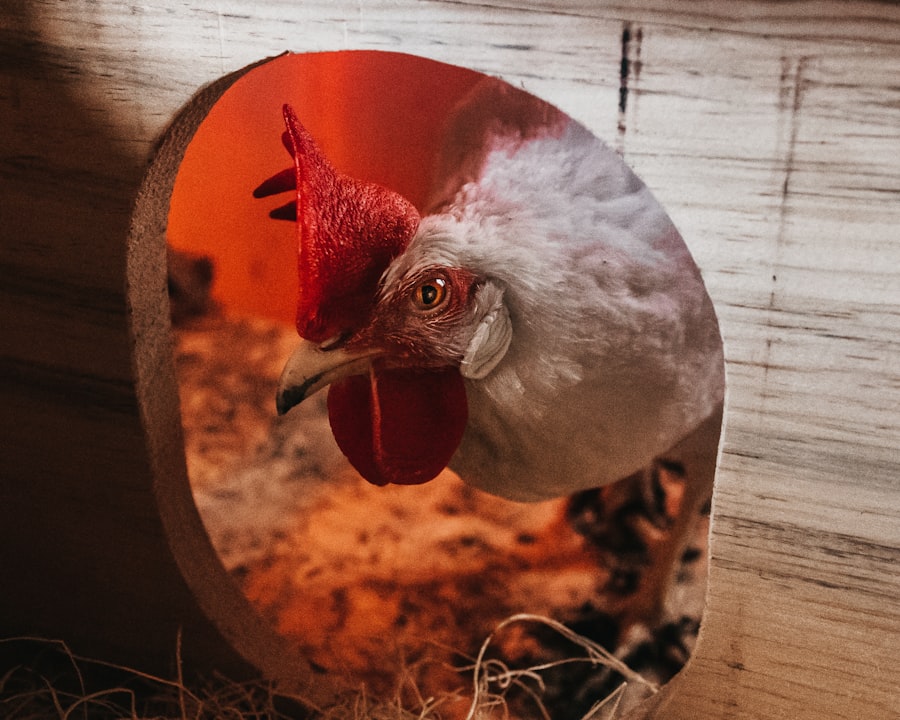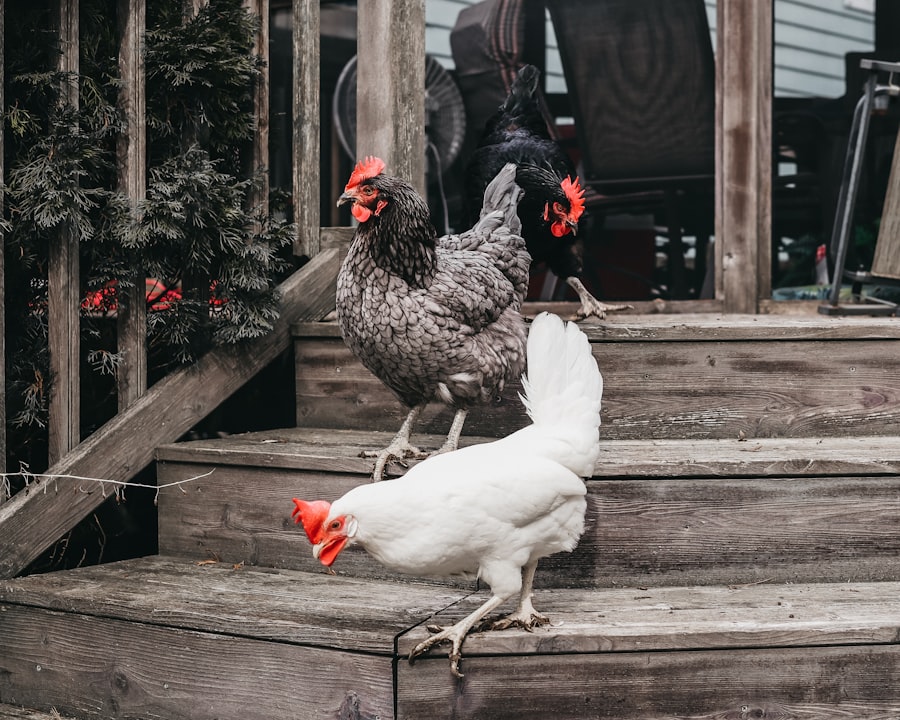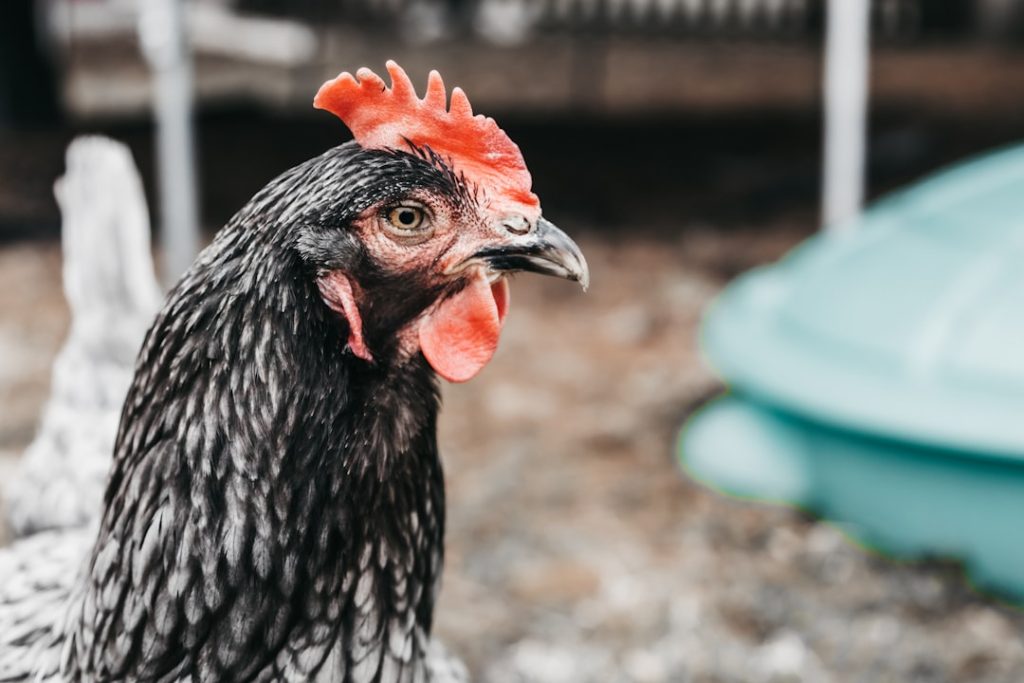Raising chickens can be a rewarding and enjoyable experience, but it is essential to understand the specific needs of young chickens. Separating young chickens from the rest of the flock is a crucial step in ensuring their health and well-being. Young chickens, also known as chicks, require special care and attention due to their increased vulnerability to diseases and injuries.
Providing a separate area for young chickens creates a safe and nurturing environment for their growth and development. This article offers a comprehensive guide on setting up a separate area for young chickens, providing proper nutrition and care, monitoring and supervising their development, introducing them to the flock, and addressing potential behavioral and social challenges.
Table of Contents
- 1 Setting Up a Separate Area for Young Chickens
- 2 Providing Proper Nutrition and Care for Young Chickens
- 3 Monitoring and Supervising Young Chickens
- 4 Introducing Young Chickens to the Flock
- 5 Addressing Behavioral and Social Challenges
- 6 Tips for Successfully Keeping Young Chickens Separated
- 7 FAQs
- 7.1 What is the purpose of keeping young chickens separated from other chickens?
- 7.2 How long should young chickens be kept separated from other chickens?
- 7.3 What are some ways to keep young chickens separated from other chickens?
- 7.4 What are the benefits of keeping young chickens separated from other chickens?
- 7.5 Are there any risks associated with keeping young chickens with older chickens?
Key Takeaways
- Separating young chickens is important for their safety and well-being
- A separate area for young chickens should be set up with proper bedding, heat source, and protection from predators
- Providing proper nutrition and care, including access to clean water and balanced feed, is essential for young chickens’ growth and development
- Monitoring and supervising young chickens regularly helps in identifying any health issues or behavioral problems
- Introducing young chickens to the existing flock should be done gradually and carefully to minimize stress and aggression among the birds
- Addressing behavioral and social challenges, such as bullying or pecking, requires patience and intervention to ensure the well-being of all chickens
- Tips for successfully keeping young chickens separated include providing enrichment activities, regular cleaning, and maintaining a comfortable environment for the birds
Setting Up a Separate Area for Young Chickens
Providing the Right Environment
When setting up a separate area for young chickens, it’s essential to consider their specific needs for warmth, space, and protection. A brooder box or area is crucial for providing a warm and secure environment for young chicks. This can be achieved by using a heat lamp or heating pad to maintain the appropriate temperature, which should be around 95 degrees Fahrenheit for the first week and then decreased by 5 degrees each week until they are fully feathered.
Brooder Essentials
The brooder should also be spacious enough to allow the chicks to move around freely and have access to food and water. Additionally, it’s important to provide proper bedding such as pine shavings or straw to keep the area clean and comfortable for the chicks. Lastly, the brooder should be secure from predators and other animals that may harm the young chickens. This can be achieved by using a wire mesh or fencing to enclose the area and prevent any unwanted intruders.
Lighting and Ventilation
Setting up a separate area for young chickens also involves providing appropriate lighting to mimic natural daylight. This can be achieved by using a light source that provides 14-16 hours of light per day, which is essential for the chicks’ growth and development. Additionally, it’s important to ensure good ventilation in the brooder area to prevent the buildup of ammonia from their droppings, which can be harmful to their respiratory health.
By creating a well-equipped and secure separate area for young chickens, you can ensure that they have the best possible start in life and are protected from potential dangers.
Providing Proper Nutrition and Care for Young Chickens

Proper nutrition is essential for the healthy growth and development of young chickens. When raising young chicks, it’s important to provide them with a balanced diet that meets their specific nutritional needs. A high-quality chick starter feed is recommended for young chickens, as it contains the essential nutrients, vitamins, and minerals they need for healthy growth.
The feed should have a protein content of around 18-20% to support their rapid growth and development. Additionally, it’s important to provide access to clean, fresh water at all times to keep the chicks hydrated and healthy. In addition to providing proper nutrition, young chickens also require regular care and attention to ensure their well-being.
This includes monitoring their behavior and health, cleaning their brooder area regularly, and handling them gently to build trust and socialize them. It’s important to observe the chicks for any signs of illness or distress, such as lethargy, loss of appetite, or abnormal droppings, and seek veterinary care if necessary. Regularly cleaning their brooder area is essential for maintaining a hygienic environment and preventing the spread of diseases.
Lastly, handling the chicks regularly can help them become more comfortable with human interaction and reduce stress as they grow. By providing proper nutrition and care for young chickens, you can ensure that they have the best possible start in life and are equipped with the essential nutrients and care they need for healthy growth and development.
Monitoring and Supervising Young Chickens
Monitoring and supervising young chickens is an important aspect of raising them in a separate area. It’s crucial to keep a close eye on their behavior, health, and development to ensure that they are thriving in their environment. Regular observation of the chicks can help identify any potential issues early on and take necessary actions to address them.
This includes monitoring their eating and drinking habits, activity levels, and overall demeanor. Any changes in behavior or appearance should be noted and addressed promptly to prevent any potential health issues. Supervising young chickens also involves providing them with regular socialization and interaction.
Spending time with the chicks can help them become more comfortable with human presence and reduce stress as they grow. This can be achieved by gently handling them, talking to them softly, and providing treats to build trust and familiarity. Additionally, it’s important to ensure that the chicks are getting along well with each other and not displaying any aggressive behavior towards one another.
Any signs of bullying or aggression should be addressed immediately to prevent any potential harm to the chicks. In addition to monitoring their behavior and socialization, it’s important to supervise their physical development as well. This includes observing their feather growth, weight gain, and overall health.
Regularly weighing the chicks can help track their growth progress and ensure that they are developing at a healthy rate. By monitoring and supervising young chickens closely, you can ensure that they are receiving the necessary care and attention they need for healthy growth and development.
Introducing Young Chickens to the Flock
Introducing young chickens to the rest of the flock is a gradual process that requires careful planning and supervision. It’s important to wait until the young chickens are fully feathered before introducing them to older chickens, as this will help reduce the risk of aggression or injury. When introducing young chickens to the flock, it’s best to do so during daylight hours when the older chickens are most active and less likely to be aggressive towards newcomers.
One method of introducing young chickens to the flock is by using a wire barrier or pen within the existing coop or run. This allows the older chickens to see and interact with the young ones without being able to physically harm them. Over time, this can help familiarize both groups with each other’s presence and reduce any potential aggression when they are eventually integrated together.
Another method is to allow supervised free-range time for both groups in a neutral territory outside of the coop or run. This allows them to interact in a more natural setting while still being closely supervised to prevent any aggressive behavior. Gradually increasing the amount of time they spend together can help them become more familiar with each other’s presence before being fully integrated into the same living space.
It’s important to closely monitor their interactions during this process and intervene if any aggressive behavior occurs. Providing plenty of space, resources such as food and water, and distractions such as treats or toys can help reduce tension between the two groups. By carefully introducing young chickens to the flock in a gradual and supervised manner, you can help ensure a smooth transition for both groups.

Preventing Bullying and Aggression
One common challenge is bullying or aggression within the group, which can lead to injuries or stress among the chicks. It’s crucial to address any signs of bullying or aggression immediately by separating the aggressor from the rest of the group or providing more space and resources to reduce competition.
Establishing a Peaceful Pecking Order
Another challenge is establishing a pecking order within the group, which is a natural behavior among chickens but can lead to tension and aggression if not managed properly. Providing plenty of space, resources, and distractions such as treats or toys can help reduce competition among the chicks and minimize any potential conflict.
Integrating Young Chickens into an Existing Flock
Social challenges may also arise when integrating young chickens into an existing flock, as older chickens may display territorial behavior or aggression towards newcomers. It’s essential to closely monitor their interactions during this process and intervene if any aggressive behavior occurs. Providing plenty of space, resources such as food and water, and distractions such as treats or toys can help reduce tension between the two groups. By addressing behavioral and social challenges proactively and providing a supportive environment for young chickens, you can help ensure that they grow up healthy, happy, and well-adjusted.
Tips for Successfully Keeping Young Chickens Separated
Successfully keeping young chickens separated from the rest of the flock requires careful planning, attention to detail, and proactive management. One tip is to provide plenty of space in the brooder area to allow the chicks to move around freely and avoid overcrowding, which can lead to stress and aggression among them. Another tip is to provide appropriate heating, lighting, ventilation, bedding, food, and water in the brooder area to create a comfortable and nurturing environment for the chicks’ growth and development.
Regularly monitoring their behavior, health, socialization, and physical development is essential for identifying any potential issues early on and taking necessary actions to address them. When introducing young chickens to the rest of the flock, it’s important to do so gradually and under close supervision to prevent any potential aggression or injury. Addressing behavioral and social challenges proactively by providing plenty of space, resources, distractions, and interventions when necessary can help ensure a smooth transition for both groups.
By following these tips for successfully keeping young chickens separated from the rest of the flock, you can create a safe and nurturing environment for them to grow up healthy and happy. In conclusion, separating young chickens from the rest of the flock is an important step in ensuring their health and well-being. By setting up a separate area with proper nutrition, care, monitoring, supervision, introduction to the flock, addressing behavioral challenges, and following tips for successful separation, you can provide young chickens with a safe environment where they can grow up healthy and happy.
With careful planning and proactive management, you can raise young chickens successfully while ensuring their safety and well-being throughout their development.
If you’re looking for tips on how to keep young chickens separated from other chickens, you might find this article on snaplock chicken coops helpful. These coops are designed to provide a safe and secure environment for young chickens, allowing them to be separated from the rest of the flock until they are old enough to integrate.
FAQs
What is the purpose of keeping young chickens separated from other chickens?
Young chickens need to be separated from older chickens to protect them from potential harm and to ensure they receive the appropriate care and nutrition they need to grow and develop properly.
How long should young chickens be kept separated from other chickens?
Young chickens should be kept separated from older chickens until they are fully grown and able to defend themselves against potential aggression from older chickens. This typically takes around 12-16 weeks.
What are some ways to keep young chickens separated from other chickens?
Some ways to keep young chickens separated from other chickens include using a separate coop or pen, using temporary fencing or barriers within the existing coop or run, or using a brooder box for very young chicks.
What are the benefits of keeping young chickens separated from other chickens?
Keeping young chickens separated from older chickens allows for better monitoring of their health and development, reduces the risk of injury or stress from older chickens, and ensures they receive the appropriate feed and care for their specific needs.
Are there any risks associated with keeping young chickens with older chickens?
Yes, there are risks associated with keeping young chickens with older chickens, including potential aggression, competition for food and resources, and the spread of diseases or parasites. It is best to keep them separated until they are fully grown.
Meet Walter, the feathered-friend fanatic of Florida! Nestled in the sunshine state, Walter struts through life with his feathered companions, clucking his way to happiness. With a coop that’s fancier than a five-star hotel, he’s the Don Juan of the chicken world. When he’s not teaching his hens to do the cha-cha, you’ll find him in a heated debate with his prized rooster, Sir Clucks-a-Lot. Walter’s poultry passion is no yolk; he’s the sunny-side-up guy you never knew you needed in your flock of friends!







